Aging
A systematic average change of an oscillators output frequency as a function only of time. It does not include effects of changing environments
Calibration or Adjustment Tolerance
The setting tolerance is the maximum allowable deviation from the nominal frequency at 25°C +- 3°C. It is normally specified in parts per million (ppm)
Duty Cycle
The percentage of each period that a signal is in logic high. This parameter is measured at a specified voltage treshold or at a percentage of the output waveform amplitude
Fall Time
The waveform fall time from high to low transition
Frequency Stability vs Temperature
The maximum allowable frequency deviation compared to the measured frequency at 25°C over the temperature window, i.e., 0° C to +70° C.
Frequency Tolerance
The maximum allowable frequency deviation from a specified nominal frequency at ambient room temperature (25°C ± 2°C). Frequency tolerance is expressed in parts per millions (ppm).
Input Current
The amount of current consumption by an oscillator from the power supply, typically specified in milliamperes (mA)
Jitter
The modulation in phase or frequency of the clock oscillator output
Linearity
The departure from a straight-line relationship of control voltage to output frequency
Load (fan out)
The capacity of the oscillator to drive other devices
Nominal Frequency
The frequency for which the crystal/oscillator is designed and to which it is tuned.
Operating Temperature Range
This is the temperature range over wich the quoted temperature-stability is specified
Output Level
The maximum or minimum voltage at an output of the oscillator under proper loading
Output Load
The characteristics of the circuit connected to the output. Normally this specification will be used as part of the performance specification.
Output Logic
The output of an oscillator is designed to meet various specified logic states, such as TTL, HCMOS, HCSL, LVDS, LVPECL, Clipped Sine Wave , True Sine Wave.
Overall Frequency Stability
The maximum allowable frequency deviation compared to the measured frequency at 25°C inclusive of 25°C tolerance, operating temperature range, input voltage variation, load change, aging, shock and vibration.
Phase noise
The ratio of the power density of one phase modulation sideband to the total signal. It is usually specified as the single side band (SSB) power density in a 1Hz bandwidth at a specified offset frequency from the carrier. It is measured in dBc/Hz
Pullability
The frequency shift of a VCXO as a function of control voltage
Rise Time
The rise time of an oscillator is defined as the transition time of the output wave form from a low to a high state. The transition time is measured between 90% and 10% of the falling edge of the switching wave form for TTL and CMOS devices
Start-up Time
Start-up Time is the time taken for an oscillator waveform to stabilise within specification after power is applied.
Storage Temperature Range
The temperature range in which the oscillator can be stored without damage, i.e. it will resume operation as normal once it is restored to within its operable temperature range
Supply Current
The current flowing into Vdd terminal with respect to ground. Typical supply current is measured without load.
Supply Voltage
The maximum voltage which can safely be applied to the Vdd terminal with respect to ground.
Symmetry (Duty Cycle)
Oscillator symmetry refers to the ratio between the time taken for a full cycle and that taken for a half cycle. For TTL output level oscillators these values are measured at +1.4 Volt, and at ½ VDD level for CMOS, HCMOS and Universal oscillator outputs.
Temperature Stability
Deviation from the nominal frequency including the frequency deviations due to manufacturing process, temperature, power source variation and load variation
Tri-state function
The tristate function allows the oscillator to be isolated from the circuit upon application of a command signal. When this feature is activated, the output of the oscillator is in tristate mode. The tristate mode allows the customer to remove the oscillator from their circuit without physically removing it. Useful for tuning, testing or trouble shooting their board.
ECO HQ
Grote Steenweg 36,
2260 Westerlo, Belgium
Phone: +32 14 54 78 63
Email: info@ecoxtal.be
Web: ecoxtal.be

